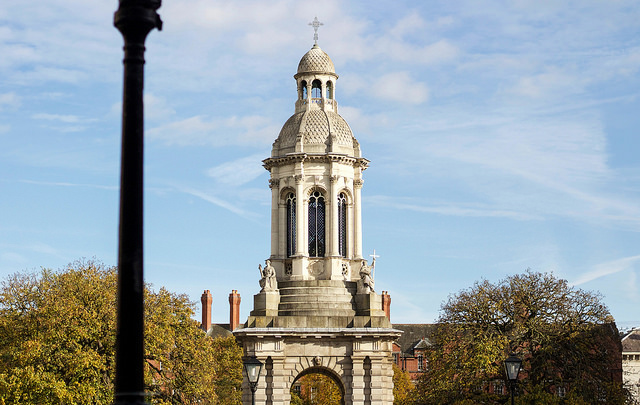Figures from Trinity’s Financial Services show that the College’s total consolidated income increased by 6.9 per cent from last year to €355 million, a significant increase compared to a 1.8 per cent increase in the year 2014 to 2015.
The figures came as part of the Financial Services Division’s annual report for the 2015 to 2016 financial year, which highlighted an overall growth in the College’s finances, including a €10 million increase to the College’s endowment fund, despite a time of financial crisis for universities.
In the report, Ian Mathews, Trinity’s Chief Financial Officer, said that it “has been a challenging year for the University and for [the Financial Service Division]”, and praised the “loyal and committed staff” for the division’s achievements “in an environment of diminishing resources”.
The Financial Strategy for the College, outlined in Trinity’s five-year Strategic Plan, set out the primary goals for the College’s finances. Trinity reached many of these goals, including maintaining a level of net assets of circa €887 million euro, achieving an exchequer to non-exchequer income ratio of 43 to 57, and pay to non-pay ratio of 69 to 31.
Speaking to The University Times by email, Mathews commented on the reasoning behind their target: “The University’s strategic goal is to reduce the reliance on Exchequer funding and to ensure the University is financially sustainable.”
“The financial challenges facing Trinity are ongoing and, as the recommendations of the Cassells Report in relation to funding for the third level sector have yet to be implemented, the University needs to continue to focus on non-exchequer income generation”, he added.
Notably, the division developed their investment fund strategy and grew the Trinity Endowment Fund to almost €180 million. The endowment fund has been under scrutiny in recent years over a number of investments held by the entity. This publicity is due, in large part, to the success of the Fossil Free TCD movement. After a year‑long campaign by students, Trinity agreed to completely divest its €6.1 million worth of indirect investments in the fossil fuel industry, held within its endowment fund. Other sections of the endowment funds portfolio have also been criticised. The University Times, in 2015, learned that €850,000 worth of investments held by Trinity is in the arms industry.
The annual report outlined a number of “key achievements” for the 2015 to 2016 year. The division created 543 new research awards, collectively valued at €635 million, along with €20 million worth of new capital projects. The division cut costs by supporting a Value Added Tax (VAT) review, and an additional €2 million was saved through the process of running tenders across a range of university facilities.
The College secured a loan of €70 million from the European Investment Bank (EIB) this year “to significantly expand the Trinity Business School”, according to the report. Speaking about the loan in a press release in November 2016, Provost Patrick Prendergast said: “Due to the current lack of funding of higher education in Ireland, the financing EIB has provided to Trinity has been crucial in our maintaining current and future standards. Without such support, quite frankly we would not have been able to progress with important flagship projects such as the Trinity Business School and Oisín House.” Oisín House is a 250-bed accommodation project that is due for completion in April 2019.
The implementation of a new Financial Informations System (FIS) has increased productivity, according to the report. Efficiencies in a number of key areas were detailed: Trinity paid 65 per cent of suppliers within 15 days, compared with 20 per cent prior to implementing the system, and the new system also allowed the college to support a research portfolio of €550 million and research expenditure of nearly €100 million.







